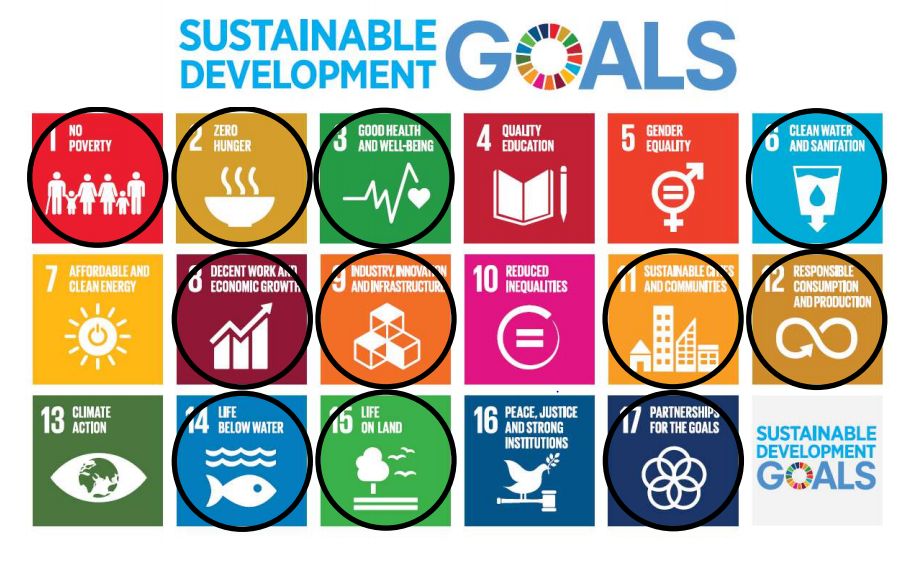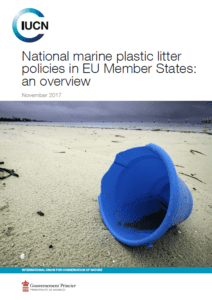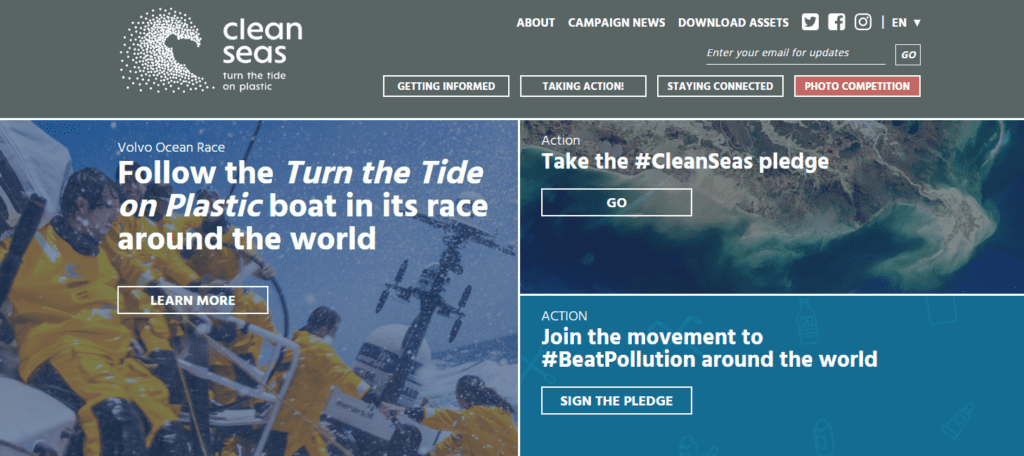Marine Plastics Need European Action: from impacts to solutions
Upcycling, re-cycling and Zero-Waste-Lifestyles – three phenomena of increasing popularity and also indicators of a growing public awareness concerning the harmful impacts of plastic waste.
Researchers suggest each year between 8-13 million tons of plastic litter were entering our seas and contaminating marine and coastal ecosystems. The contamination is considered a global threat to biodiversity, ecosystem services, food security, and thus also human health. Already back in 2015, the European Commissions had adopted an “Action Plan on Circular Economy”. Now, the Commission plans to finalize its strategy on plastic litter by the end of 2017 with marine plastic litter being of major concern.
“Marine Plastics Need European Action”
On Wednesday 8 November the conference “Marine Plastics Need European Action” jointly hosted by Ricardo Serrão Santos MEP and Vice-Chair of the EP Intergroup on “Climate Change, Biodiversity, and Sustainable Development and “Seas, Rivers, Islands and Coastal Areas“ together with IUCN European Regional Office, called for strong political action and provided policy recommendations to support the Commission’s strategy on plastics.

Conference “Marine Plastics Need European Action” (left) audience; (right) Commissioner Karmenu Vella opening ©European Bureau for Conservation and Development
Within the context of the event, the freshly released IUCN report on existing national and sub-national policies tackling marine-litter across EU Member States, including policy recommendations how to reduce marine litter in Europe was introduced. You can find it for download here.
More microplastics than plankton
MEP Serrão Santos opened the conference by highlighting the distressing evidence, that there is currently more microplastics in the ocean than there is plankton. Commissioner Karmenu Vella followed with introductory remarks, ensuring that the soon to be released EU strategy was committed to free the ocean from plastics, focusing visible litter as well as so called microplastics. Beyond, he stated that it is intended to make all plastic packaging on the EU market being recyclable by 2030, but also highlighted the urgency for common action on different levels.
Pierre-Yves Cousteau set the scene by sharing his passion for the study and protection of the oceans, which he had inherited from his father, the renowned explorer, author, and filmmaker Jacques Cousteau. Despite brief anecdotes, the photos he shared were far from romantic: Pictures of dead wildlife filled up with plastics and sea surface that resembled a plastic landfill clearly demonstrated that plastic contamination is not a distant dystopia.
Currently, eight million tons of plastics are estimated to enter our seas annually with only 15% of the litter visible on the surface.
The remaining plastics have sunk to the ground or are microplastic particles in size of sesame seed, or even invisible to the eye. Sea life gets easily caught up in chunky plastic waste and marine organisms are prone to contamination as they ingest tiny microplastic debris.
Cousteau highlighted the valuable role of Marine Protected Areas for biodiversity conservation and the need for cross-border cooperation for their effective management. He stressed the fact that our ocean, our natural world in general, knows no national boundaries, but is, in fact, one huge system which’s protection asks for internationally coordinated governance and action.
To tackle the plastic issue, Cousteau suggested to
- invest in innovation & science (materials, capture, recycling)
- launch multi-industry initiatives & regulations (lifecycle design, traceability)
- invest in infrastructure
- ban single-use and non-recyclable plastic
- run education and awareness raising campaigns
- install a global authority on air and water – as they are naturally borderless
International perspective: the impact of marine plastic
Ulf Bjoernholm from the UN Environmental Programme leads to his presentation by backing the message, that “we need to work together” at a global scale in order to protect our ocean from plastic litter. As research continues to confront us with devastating numbers (see below), from his point of view, the global community – policy-makers included – has grown increasingly aware of the problem dimension.
Bjoernholm states, what was needed now is translating the political momentum at international level into targeted actions at both global and regional levels.
- 31% of global fish stocks have disappeared
- >8 million ton plastic leaks into the ocean each year
- >600 species are impacted – of which 15% are endangered
- 52% of sea turtles have plastics in their belly
- This has a major economic cost – e.g. marine litter costs the EU fishing fleet USD 82 million/year
- By 2050, oceans will carry more plastic than fish, and 99% of seabirds are likely to have ingested plastic
As key elements for sustained effective actions the UN Environmental Programme suggests global guidance under UN leadership, Regional cooperation (for example regional seas and fisheries conventions), continued EU leadership, strong partnerships with the private sector stepping up and empowerment and engagement of Civil Society.
At last Bjoernholm stressed in particular that more and better knowledge concerning the sources and impacts of marine litter was needed, saying that we still lacked understanding of the long-term impacts of marine plastics on all our ecosystems. Referring to the health of sea life in a first place, but also considering the conditions of terrestrial life, not to forget the human dimension: Economically speaking,
a healthy ocean matters to a large majority of cities that are located close to the coast, harnessing nature for trade, agriculture and industry.
Speaking of health, three billion people rely on fish as source of protein and are affected directly either through decline in availability or through the consumption of seafood poisoned by plastic particles. Even when setting aside the potential harms arising from the direct consumption of seafood, microplastic particles still pose a risk by finding their ways into the food supply chain via our soils and drinking water.
Policy recommendations from UN Environmental Agency
- Need for regulation and economic incentives as well as voluntary action.
- Creation of a Circular Economy closing the material loop and improving plastics management.
- Reduced production and use of single-use plastics through smart design, long life-span and recovery.
- Reduced production and use of non-recoverable plastics as e.g. in cosmetics and personal care products.
- All stakeholders must act and cooperate.
National Perspective: building a blue economy
Fausto Brito e Abreu represented a national government perspective on the issue, asking what Member States can do: What is their role? He started off highlighting that 97% of Portuguese territory consist of ocean, whereas to date only 3.1% of wealth and 3.6% of jobs are created through traditional and emerging marine activities.
The Portuguese government puts emphasis on fostering the sustainability of those activities and aims to build a blue economy in order to support socio-economic wellbeing of its citizens while also tackling impacts of the shared global challenges faced by our oceans: climate change, water acidification – and plastics.
The Portuguese national approach consists of investment in four main pillars:
- Knowledge: Main foci are the support of science, the fostering of public literacy through education and surveillance or monitoring of marine activities’ sustainability. For instance, in Portugal has installed around 13 different monitoring programmes and projects. Besides an empowered Civil Society organized by NGOs, Municipalities, Associations, etc. has engaged in marine litter cleaning actions covering beaches, rivers, estuaries and even the sea bottom.
- Partnerships with multiple stakeholders
- Governance: The Portuguese government developed an Integrated Maritime Policy and has a dedicated Directorate-General for Maritime Policy.
- Financing: Funding is acquired from various sources, including the European Maritime and Fisheries Fund; Portugal2020 Partnership Agreement; Mar2020 Programme; Iceland, Liechtenstein and Norway Grants for Blue Growth Innovation and SMEs; Fundo Azul.
In his presentation, Brito e Abreu outlined how national actions related to building a blue economy do matter globally by actively supporting the achievement of the UN Sustainable Development Goals (SDGs). SDG 14 (“conserve and sustainably use the oceans, seas and marine resources for sustainable development”) is at centre stage, but various SDGs are supported due to the cross-cutting relevance of sea conservation and marine activities.

Sustainable Development Goals, tackled by the Portuguese Government © Fausto Brito e Abreu
Conscious of the significant potentials of national action, Portugal engages in a range of voluntary commitments.
The Private sector: the need for alternatives to plastic
Given the setting, the view represented by Karl Foerster from European Plastics had a hard stand. Nevertheless, he stressed how plastics were contributing to the achievement of the SDG and emphasized that the industry did not work to create more landfills and litter, but sought to support the creation of circular solutions.
Luc Bas critically noted that, after all, the plastic industry’s business model was built on the production and not on the recycling or banning of plastics. Consequently one could infer that any solutions proposed or supported by the industry leave out of question the need for real alternatives to the use of plastic as a material altogether.
From the industry perspective, the main issue of plastic leakage into the environment is directly caused by human misuse of the material and can hence be corrected by some straight-forward behavioural changes achievable through measures such as:
- Raising consumer awareness: Responsible use and disposal of plastics.
- Proper waste management systems: Stopping plastics from going to landfills, zero litter and viewing plastic waste as resource for innovation and source of energy.
Foerster stressed that different countries have quite different perceptions of the problem’s relevance and hence industry created dedicated platforms concerned with discussing industry’s role and actions at international level. To name a few: World Plastics Council, Marine Litter Solutions, Operation Clean Sweap, Global Plastics Alliance.
Civil society: “impossible to recycle our way out of the problem”
Monika Verbeek from Seas at Risk posed the question: What is missing at EU level to reduce plastic waste? Verbeek’s clear position is that the only viable solution lies in reduced use of plastics only as a material for things built to last. She argued optimistically that immediate action wasn’t only needed but possible given the fact that most plastic products are free give-aways like forks, cups, straws, plastic bags. All of which are unnecessary or replaceable through non-plastic materials.
According to Verbeek, consumers are ready to change behaviours if this comes at bearable cost. Sustainable consumption patterns should be fostered and plastic avoidance made as easy as possible. This is only possible through legislation in the long-run and citizens demand such guidelines and binding rules from policy-makers.
The indication on packaging that it was made out of recyclable or biodegradable plastic might foster wrong consumer behaviour and encourage the quicker disposal of the materials, according to Verbeek. There must be more awareness raising concerning the fact that
biodegradables are not the solution and neither is recycling or upcycling.
Looking at policy level, this notion seems to have partly arrived.
As a promising outlook, Verbeek noted, that European Commission First Vice-President Frans Timmermans had recently acknowledged that it was impossible to “recycle our way out of the problem”.
Summing up, Verbeek offers a three-step approach to reduced plastic use
- 1. Reduce plastic bags at national level
- 2. Legislation at national level
- 3. Rethink plastic use at all levels
The final discussion between audience and panellists brought up the agreed policy recommendations that voluntary commitments are much needed but cannot replace mandatory ones as those emphasize urgency and change the dynamics. Furthermore, in this context the particular role of National Governments shall be clearly defined.
What about the role of Protected Areas?
Take away messages – food for thought:
- Contamination occurs across borders, hence local solutions are ineffective and transboundary actions are needed.
- Education and awareness raising at community level (including local fishermen as well as regular consumers) can make a critical difference in encouraging behavioural changes towards responsible plastic use or waste management.
- A broad public debate questioning how microplastics might not only contaminate our ocean, but our soils and in turn affect terrestrial biodiversity and agricultural production. Thus, creating a link between the issue of microplastics and the wider context of food security. (CAP?)
Further links:
Video on EU Circular Economy Strategy
DG Environment on Circular Economy, Downloads and Updates:
Magazine Article “Plastic Pollutants Pervade Water and Land” (June 2017), TheScientist:
Marine plastic debris & micro plastics – Global lessons and research to inspire action and guide policy change (United Nations Environment Programme, 2016)

